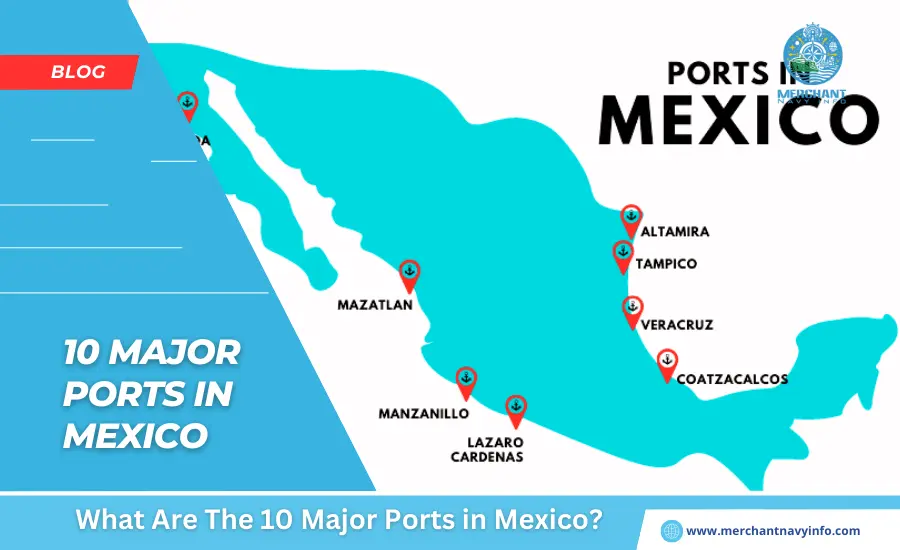
Mexico is located in the southern part of the North American continent. And also, is the world’s 10th most populous country. It is a developing country, classified as an upper-middle-income country by the World Bank. And is alsothe second-largest economy in Latin America. It has a diverse cultural heritage and many UNESCO World Heritage sites. Financial services and tourism are its major sectors, followed by automotive, petroleum, electronics, and agriculture. Mexico is bordered by the Pacific Ocean and the Caribbean Sea. There are more than 20 ports in Mexico Atlantic coast and about a dozen on the Pacific coast. Here are Mexico’s ten largest ports, broken down by cargo volume handled:
Major Ports in Mexico
1. Port Of Manzanillo
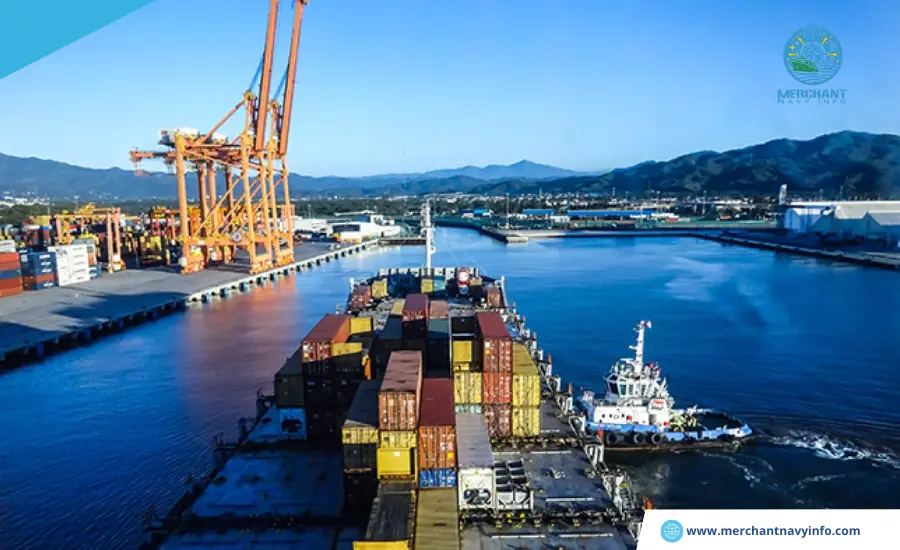
The ports in Mexico of Manzanillo is located in the state of Colima on Mexico’s western Pacific coast. The cargo port and famous resort of Puerto de Manzanillo is a major gateway for international trade. Connecting with industrial and commercial corridors in the western and central regions of the country. Direct shipping is provided to 125 ports in more than 40 of the countries, including the United States. The Canada, Japan, India, also China, Russia, and Germany. In 2022, Manzanillo handled approximately 31 million tons of cargo. And also 3.474 million TEUs of cargo, up 3% from the previous year. The region’s economy is based on the manufacturing, trade, and tourism sectors and is rich in natural resources. Main exports include fish, corn, lemons, bananas, canned goods, wine, copra, wood, cement and other products. It also offers repackaging services for shoes, clothing, and chemical products.
2. Port Of Lázaro Cárdenas
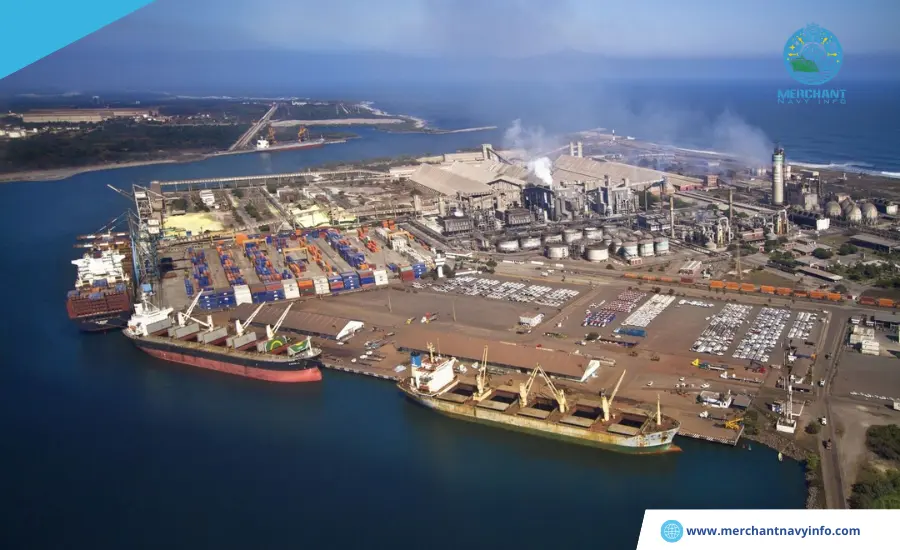
The ports in Mexico of Lázaro Cárdenas is located at the mouth of the Rio Balsas River on Mexico’s Pacific coast in the state of Michoacan. It is a heavily protected deep-water port and the second largest in the country. The port is expected to handle approximately 29 million tons of cargo and 2 million TEUs in 2022, with growth expected to be driven by the automotive industry. The industry recorded a 40% increase in 2022, a trend that continued in 2023, as the facility set a new record by handling 646,000 automotive units. There are steel mills and industrial areas, as well as a naval base. The most important exports include iron sheets, steel bars, ammonium, phosphates, and containerized products.
3. Port Of Veracruz
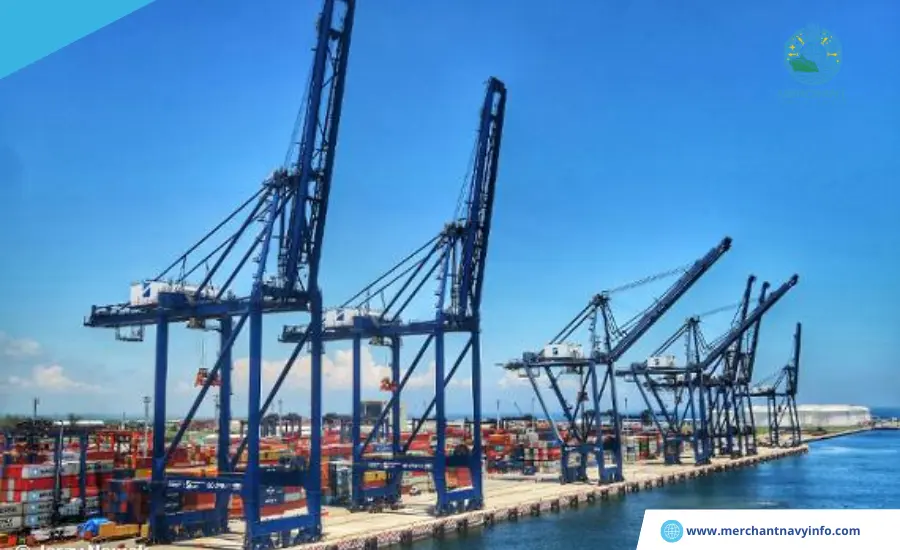
Veracruz was founded in the 15th century by the Spanish conquistador Hernán Cortés and developed into an important financial and trading center. The port of Veracruz is located on Coast of Mexico near the Bay of Campeche. It serves the central and southern regions of the country and is also connected to the Americas, Europe, and Africa. Cargo volume in Veracruz was 2.59 million tons in 2022, compared to 2.37 million tons in 2021. It has 11 wharves with an area of 4500 square meters and handles corn, petroleum coke, wheat, soybeans, containers, steel, scrap metal, vegetable oil, rice, tallow, benzene, rapeseed, pig iron, clinker, automobiles, machinery, pharmaceuticals, etc.
4. Port Of Coatzacoalcos
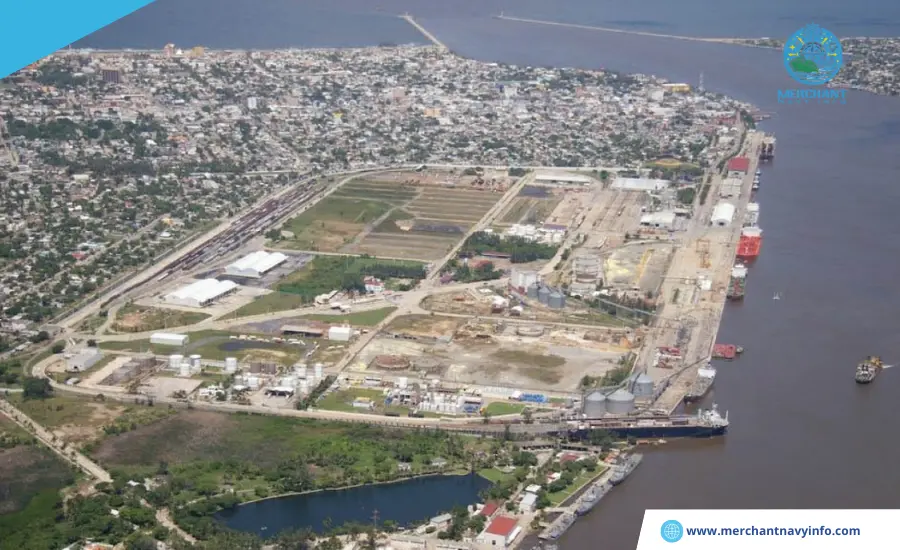
The port is located at the mouth of the Coatzacoalcos River before it empties into the Gulf of Mexico. It is the country’s main oil port and natural harbor, which are divided into two parts: the free port on the west bank of the river and also the Pajaritos oil port owned by Pemex. Coatzacoalcos is a major port and transportation center connected by rail to the Mexico Metropolitan Region and Mérida. It mainly exports petroleum products manufactured in MinatA quay that receives gas and oil tankers. It also has storage facilities for bulk goods, containers and general cargo. Has eight conventional berths and nine tanker berths and handled 2.53 million tons in 2022.
5. Port of Altamira
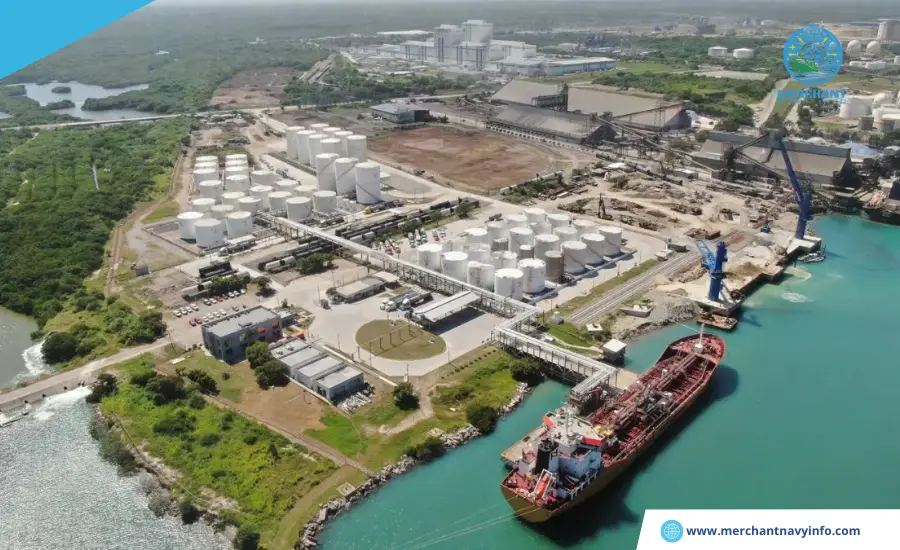
The Port of Altamira is located on the Gulf of Mexico and serves the country’s economic and industrial region, including the states of Tamaulipas, Coahuila and San Luis Potosi. It is a popular vacation destination for nature lovers, golfers, sport fishermen and hunters. Also home to numerous industries, including shipyards, canneries, sawmills, clothing, textile and machine repair plants. It handles petroleum, LNG, agave fiber, sugar, livestock, copper, coffee, leather and container cargo. The Port of Altamira’s handling volume is set to be 1.65 million tons in 2022, compared to 1.73 million tons in 2021. It has a large, modern container terminal with four docks.However, it primarily serves the region’s petrochemical sector, helping to create jobs and generate revenue.Companies such as BASF and POSCO have processing facilities close to the port complex.
6. Port of Tampico
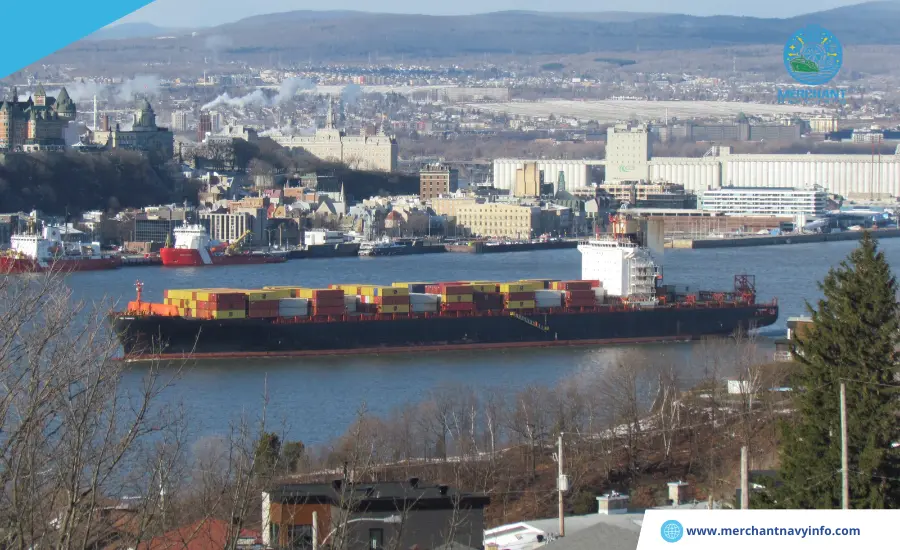
The Ports of mexico of Tampico is located on the north bank of the Rio Panuco in Tamaulipas, just 10 kilometers from the Gulf of Mexico. It is a major maritime gateway for petrochemical and mining products such as steel, timber, metals, minerals, molasses, and other industrial products. The facility handles approximately 8,831,000 tons of cargo annually, including 11,000 TEUs. In 2022, the port handled 650,000 tons. 20 major shipping lines connect Tampico with also 100 ports in countries such as the known United States, Canada, Cuba, Brazil, the Singapore, and also Australia. It is an important commercial and military port with 24 berths. On the south bank of the river are dry docks and shipyards, including two tanker terminals owned by Pemex.
7. Port of Guaymas
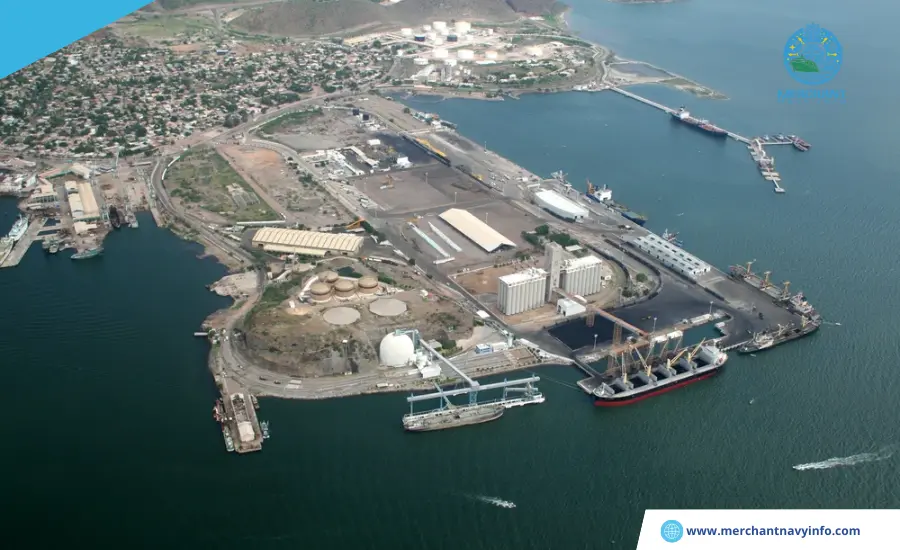
The Port of Guaymas is located near the Gulf of California, off the Pacific coast of Sonora. Just 400 km from the US border. Approximately 600,000 tons were handled here in 2022. Located at the mouth of the Rio Yaqui River, the port is an important maritime, industrial and tourist center in Mexico. It has one of the best natural harbours in the world, covering an area of over 90 hectares and divided into several areas six wharves. Serving the agricultural hinterland, it exports cash crops such as cotton, vegetables, wheat, corn, soybeans, livestock, furniture, and metals such as copper, magnetite, gypsum, etc. It also trades general cargoes such as timber, steel, and RoRo, as well as liquids such as petroleum, diesel, sulphuric acid, ammonia, and fish oil.
8. Port Of Topolobampo
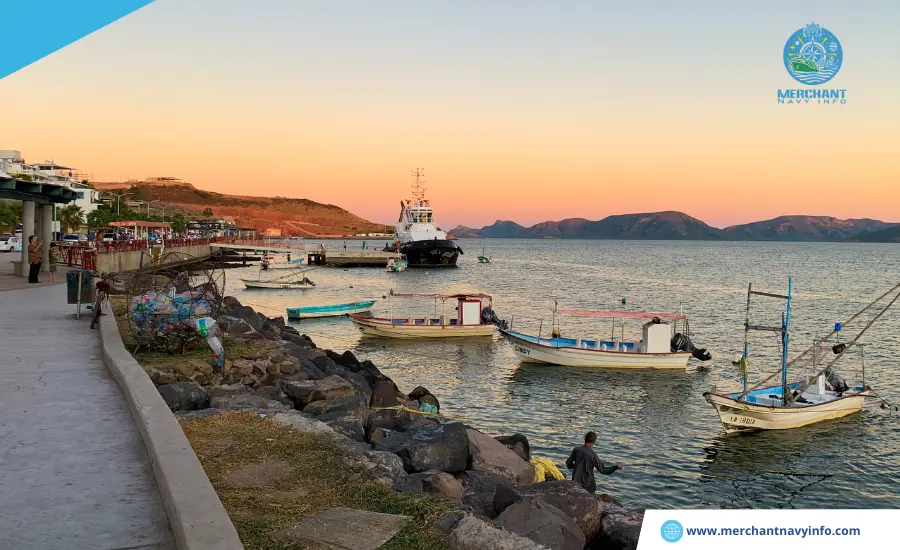
Topolobampo is located in a very fertile agricultural area on the west coast of Mexico, producing more than half of the country’s agricultural output. Thus, wheat, soybeans, sorghum, vegetables, and fruits make up the majority of exports, followed by livestock. There are four dedicated terminals handling general cargo, containers, petroleum products, LPG, and ammonia. Topolobampo has more than ten piers, 600 m long and 6 m deep on the longitudinal sides, for anchoring fishing boats and five fishing wharves. The port handles approximately 1,000 ships and 185,000 passengers annually. In 2022, it handled 410,000 tons. It is connected to northern Mexico by the Chihuahua Pacific Railroad and has trade partners around the world, including Japan, Singapore, South Korea, New Zealand, Taiwan, and the United States.
9. Port Of Mazatlan
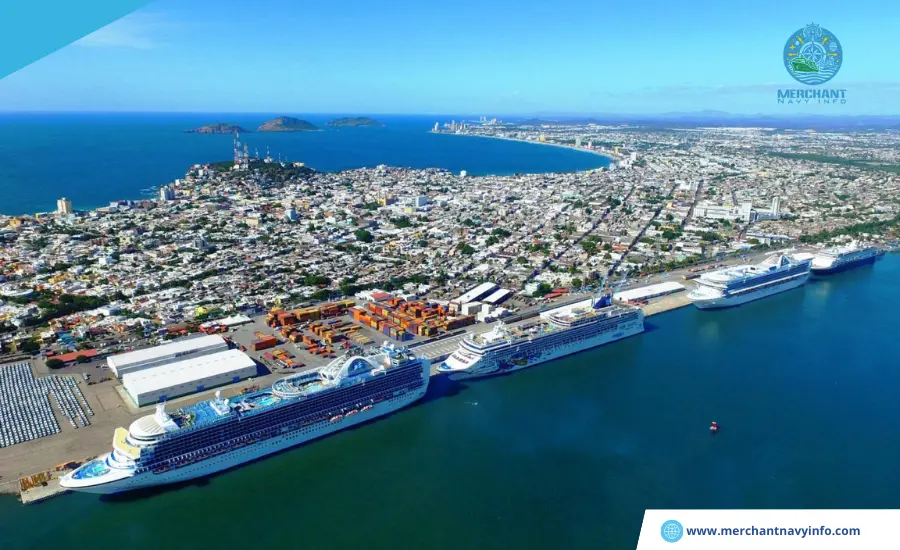
Mazatlan, which means “place of the deer” in Nahuatl, was a small fishing village until the port expansion began in the late 1990s. Today, it is a bustling port where maritime trade with Asia, Europe, and America takes place. Located in the western Mexican state of Sinaloa, the Port of Mazatlan handled 300,000 tons in 2022, including 33,314 TEUs in the same year. Puerto de Mazatlan’s economy is based on agricultural industries such as food processing, fishmeal, and breweries. However, the port also receives industrial products such as rolled steel, containers, and automobiles. With 12 berths and a quay length of 1,426 m, it can accommodate general cargo ships, container ships, tankers, and ferries. A popular Pacific coast resort is known for its golden sand beaches and scenic waterfront promenade overlooking the international cruise terminal. The fishing industry is also thriving, with Mexico’s second-largest commercial fishing fleet.
10. Port Of Ensenada
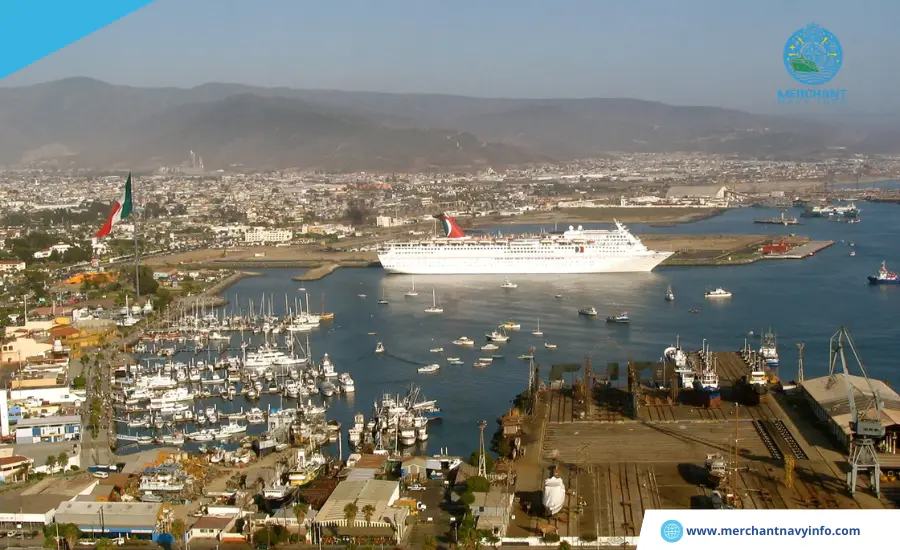
The ports in mexico of Ensenada is located near Todos Santos Bay, off the Pacific coast of Baja California in northern Mexico. Its convenient location near the U.S. Pacific border gives it access to major international shipping lanes connecting 64 ports in 29 countries. It has an area of 9,000 square miles and six multi-purpose wharves that handle all kinds of cargo. This port city is a famous holiday destination with luxury hotels, villas, beautiful beaches, and delicious fish restaurants. The city’s economy is also based on agriculture and livestock farming. Olives and grapes are produced in abundance, and most of the cotton is exported to Asian countries and the United States. Other exports include limestone, crushed stone, bagged stone, and sand. Fertilizer is the most important import from Asia, Nicaragua, and New Zealand.









